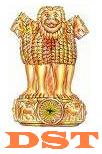Introduction
Health monitoring of automotives (motorized or self propelled vehicles) is a field of study that describes and quantifies the running integrity of components in automotives. Health monitoring of automotives is helpful for timely identification of potential failure areas well in advance. A health monitoring system integrated within the automotives could locate various possible failures which in turn reduce life-cycle costs and the costs of energy (fuel) for automotives. Health Monitoring of automotives is a concerted effort with applicability to quality control in manufacturing units and maintenance operations. Hence, the foremost purpose of health monitoring is to observe and prevent possible problems with automotives before a failure occurs. This type of health monitoring is termed as preventive, however automotive industries now aim at predictive health monitoring i.e. Instead of a vehicle or machine receiving scheduled maintenance, predictive health monitoring would determine the level and type of damage a machine has and then predict how much longer the machine can safely continue to operate. Health monitoring of automotives is widely applicable to industries such as air conditioning, production lines, lifts and escalators, transportation and marine transport, air transports, traction motors on trains, chillers in buildings, water pumps, stacker cranes for logistics and warehouse, press rollers for offset printing machinery, beverage production lines, and milling machines etc.
The purpose of this Brainstorming session on “Health Monitoring of Automotives” is to discuss an approach to integrate data acquisition and analysis for automotives for the purpose of assessing their condition for quality control and maintaining their operational performance to support a system in a cost effective way.
|
Sponsored By
   

|





